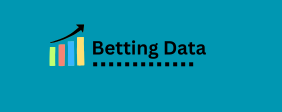That’s why you have to generate, track, and nurture the right leads.
For that, you need successful lead management.
This article covers everything you need to know about lead management, including the definition, process, best practices, and automation. Remember that the average cost per lead in the B2B SaaS industry is $237.
So there’s a lot of money hiding in plain sight.
What is lead management?
It usually involves series of steps to analyze lead bulk email marketing services data to determine how likely they are to make a purchase. After leads make a purchase, they become customers and lead management tracks all steps along the way.
Why is lead management so important?
Lead management is essential for a winning business strategy, because it aids in the conversion of prospects into paying customers.
It enables businesses to track lead origins, refine marketing efforts, and enhance overall return on investment.
Lead management maximizes the efficiency of sales efforts, improves customer conversion rates, and drives revenue growth.
This is how lead management benefits sales processes:
- Prioritization: Lead management helps sales teams focus on high-potential leads first, increasing chances of conversion.
- Follow-Up: Automated reminders ensure timely follow-ups, reducing the risk of losing interested prospects.
- Personalization: Tracking lead information allows for tailored communication, enhancing customer engagement.
- Analysis: Metrics and analytics from what to wear to a wedding? lead management systems help refine marketing and sales strategies for better outcomes.
Most importantly, businesses can better prioritize leads thanks to lead management and focus on the ones that are most likely to convert.
Lead Management: 8 most important steps
1. Lead Generation: Capturing potential customer information through various marketing channels like forms, social media, and events.
Lead generation involves collecting contact information from potential customers.
This can be done using online forms, social media campaigns, or in-person events.
The goal is to gather enough details to initiate a relationship and start them on the path to becoming paying customers.
2. Lead Tracking: Monitoring and recording lead activities and interactions with your brand.
Lead tracking involves keeping a record australia data of all interactions and activities a lead has with your brand.
This includes actions such as website visits, email opens, and social media engagements.
Tracking this data helps you understand the lead’s interests and readiness to buy.
3. Lead Qualification: Evaluating leads based on predefined criteria to determine their potential to convert.

